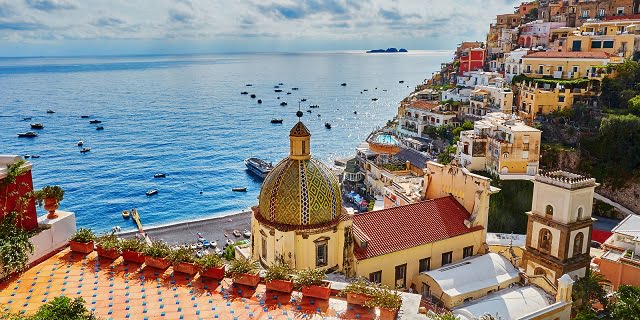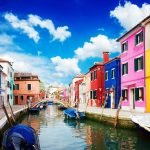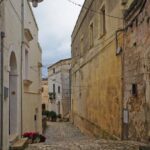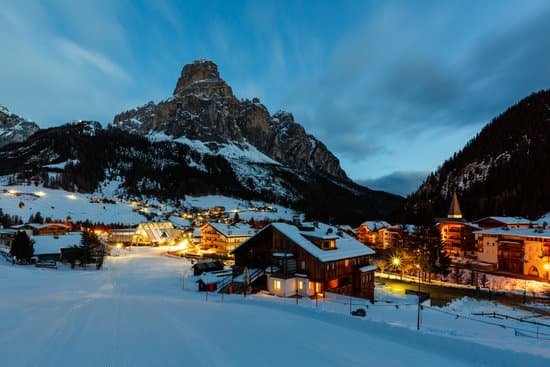
Italian culture and traditions are steeped in centuries of history. The culture reflects the influences of civilizations past and present, from the legacy of Ancient Rome which left a lasting influence on the country, to more recent regional influences which have shaped unique variations of Italian life all over Italy. Many Italian traditions come from ancient Roman religion and other values that shaped Eastern Mediterranean cultures during this period.
It has also been influenced by the waves of migrating populations – ranging from Germanic tribes to Greek traders and Arabs – spanning throughout modern history. All these diverse influences have combined to create an incredibly vibrant culture which is uniquely Italian in character.
One of the most iconic aspects of Italian Culture is its cuisine. Culinary excellence holds a sacred place in Italian homes, with family-style recipes being passed down through generations while still staying highly relevant to the modern day Italy palate.
Meals are heartily enjoyed around large tables for hours on end, often accompanied by a glass or two of fragrant wine. Relaxation, leisure, socialising and enjoyment are all hugely valued in Italy; coffee bars can be found around every corner bustling with locals gathering throughout the day for cups of espresso or cappuccino whilst conversing with friends and strangers alike.
Museums also feature prominently within Italian cities, containing generations old artifacts now illuminating days gone by and providing insight into contemporary lifestyles dating back centuries ago. Religion strongly shapes much of traditional life too; celebration upon celebrating scores gaily through towns as citizens pay homage to their spiritual beliefs alongside two major festivals of Easter (Pasqua) and Christmas (Natale).
Music plays an intrinsic role – particularly opera – influencing both contemporary art forms such as popular music (often reminiscently romantic in lyricism), yet again with countless iterations derived from classical lines beside regional strains molded over time by local dialects.
Italian Culture is thus truly unique beyond traditional tourist imagery alone; its sheer vibrancy cannot be fully appreciated until experienced first hand – exploring corners both well known to many yet many hidden gems yet still awaiting curious discovery.
An Overview of Regional Variations in Italian Culture and Traditions
The Mediterranean Coast
The Mediterranean Coast is the birthplace of many aspects of Italian culture. Food here is heavily influenced by a variety of cultures, from the Greeks and Romans to the French and Spanish. Dishes such as pizza, pasta and risotto owe their origin partly to this part of Italy. People on the coast also tend to be extremely passionate about life, with celebrations such as festivals or weddings often going on for days at a time.
Religion is still very important for many families here. Catholicism and its various traditions are especially important in this area; almost 98% of Catholic Italians live in coastal areas. Adding more color to the customs in these parts is their fondness for music – whether it’s traditional folk music or operas from world-renowned composers like Puccini or Verdi.
The Alps
Regions located near the Alps are characterized by slightly different traditions than those found on the coastline. Its population consists mainly of Roman Catholics, while there are others who practice Orthodox Christianity or Islam. Religion certainly plays an important role in people’s everyday lives here as well, with regular religious rites observed on special feast days or holidays – such as Christmas and Easter.
Aside from religion and worship, food is also prominent in this region. Alpine cuisine typically consists of cured meat, smoked cheeses, fresh vegetables, polenta (a staple food made from cornmeal or farina), soups and stews all prepared with locally-grown ingredients. Popular types of sweets feature nuts, dried fruits as well as chocolate fondue – which may be served with figatelli (a type of salami sausage).
Festivals
Festivals that spread across both regions often revolve around ancient pagan rituals celebrating nature’s cycles – such as the springtime celebration of Semana Santa (Holy Week) and La Pasquetta (Little Easter). Other popular cultural events include Carnival which culminates with Martedi Grasso (Fat Tuesday), just before Lent begins; Festa della Repubblica which celebrates Italy’s republic day; as well as processions featuring figures representing holy saints during la Settimana Santa (the Holy Week).
Though beliefs may differ between regions due to historical influences throughout Italy’s history – one can observe similarities among regional traditions that still remain today: ideas shared because they stemmed from a collective culture dating back to early civilizations. From major holidays to casual gatherings among friends at local trattorias, each community still carries its own unique heritage no matter how far away it sits from another region within Italy’s social fabric.
Italian Cuisine
Italian cuisine is one of the oldest and most well-respected in the world. It has become popular all over the globe, influencing people’s diet with a variety of delicious pastas, pizzas, sauces, soups, and salads. But where did Italian food come from? What makes it so unique? Knowing the history behind Italian cuisine can help us appreciate it even more.
Ancient Rome
The earliest influences on Italian cuisine came from nearby cultures such as Ancient Rome. Roman cooks relied heavily on simple yet tasty dishes that were easy to prepare. Many staples on an Italian menu today have ancient origins; polenta, for example, was a Roman dish made with ground maize and served as a side dish or as an ingredient in soup or stew.
Mediterranean Influence
In addition to its ties with Ancient Rome, Italy has many culinary influences from other Mediterranean countries. This includes olive oil, which is used liberally in nearly all of Italy’s cooking; tomatoes and tomato sauces are also prominent elements of Italian cuisine due to their abundance in southern Italy.
Herbs like oregano and basil are essential ingredients when making pasta dishes or pizza toppings; these flavorful ingredients gave rise to distinct regional dishes like Ligurian pesto sauce or Sicilian caponata (an eggplant dish).
North African Influence
Another less-mentioned element of Italian cuisine is its ties with North African countries such as Tunisia, Algeria, and Morocco. Spices native to these areas have featured heavily in dishes like arrabbiata sauce and couscous alla trapanese (a couscous dish that contains olives and tomatoes).
Moreover, two mainstays of modern-day Italian cuisine – lasagna Bolognese and tiramisu – had their origins in north Africa: lasagna was derived from North African pastilla (pie) while tiramisu was influenced by Almalloum (a dessert popular among Tunisian Muslims).
Handicrafts and Folklore
Traditional Crafts
Italy offers an abundance of traditional crafts and artwork. The most famous of these is probably wood carving, which is used to create intricate and beautiful religious statues and figures in churches throughout the nation.
Other craft items include leather objects, wrought iron furnishings, ceramic vessels, paper lamps, jewelry made with coral beads, and hand-painted glassware. In keeping with centuries-old tradition, much of this craftwork is created with locally sourced products such as wood from the Mediterranean coastal regions or natural pigments obtained from the Bari region near Naples.
Painting & Sculpture
Much like many European nations, Italian culture is rooted in artistic practices such as painting and sculpture. Throughout its history, Italy has produced a significant number of artists who have had a major impact on the international art scene.
Artists such as Leonardo da Vinci and Michelangelo are two standout names whose influence can be found in both classical and modern works today. In addition to these well-known historical artists, contemporary painters and sculptors still practice their craft in Italy today using a variety of techniques and materials.
Folklore
No discussion of Italian culture would be complete without mentioning folklore traditions passed down from generation to generation. Every region has its own unique folklore legends that draw upon local customs and beliefs.
Some tales describe mystical creatures like fairies or goblins while others tell stories about famous people who lived during specific time periods or notable events that took place throughout Italy’s history. Traditions like these help keep alive the past for future generations while also giving them an opportunity to reflect on their shared cultural heritage.
Art and Architecture in Italian Culture
Exploring Italian culture and traditions can be a truly enriching experience. One of the main aspects that awes visitors about Italian culture is its art. Throughout the country’s history, Italy has been an epicenter for the creative arts, serving as both a source of inspiration and innovation.
Music has played an integral role in Italian culture too. From classic opera to modern-day pop music, Italy’s musical legacy transcends eras and genres, with many singers and songwriters of international repute having chosen to make their home there over the years.
Italian culture also revels in excellence when it comes to architecture. From Baroque churches like St Peter’s Basilica in Rome to the strategic structures of Florence like the Ponte Vecchio and the Uffizi Gallery, Italy’s capital cities are filled with iconic buildings.
Of particular note is Venice, which showcases 16th-century architecture complete with wrought iron lamp posts and mosaic pavements that have survived centuries beneath gently lapping waves. Many towns remain largely unchanged, retaining historic facades faded from time but brimming with character.
Creativity runs through every aspect of Italian culture too – food included. Pizza is predictably popular within Italy – though certain regions take it one step further – but there’s plenty more besides including everything from regional specialties such as ossobuco (veal shank stew) that originate from Milan, to spaghetti carbonara popular throughout Lazio region near Rome.
Whatever you order off an Italian menu, you can guarantee that you’ll always enjoy fresh ingredients prepared with passion by world-class cooks. From warm cups of cappuccino coffee to decadent gelato ice cream flavors native to Sicily – digging into traditional Italian cuisine is a must for anyone visiting this magnificent country.
Italian Music and Dance
Italy is renowned for its strong cultural heritage, encompassing a variety of music and dance that reach far beyond its iconic country borders. Traditional Italian music consists of the folk music enjoyed in cities and towns throughout the nation, with distinctive regional variation embracing both classical rhythms and styles as well as those more recently created from foreign influences.
Tarantella, A Popular Folk Dance
The tarantella is perhaps the best-known example of traditional Italian folk dance, originally hailing from Salento area in southeastern Italy. A fast-paced couple’s dance that is passed down through the generations to this day, the Tarantella features quick steps interspersed with brief pauses to keep dancers on their toes. Commonly paired with live folk bands playing fiddle and bagpipes, it is often a centerpiece during weddings and other celebrations in Italy’s south.
Folk Music From Across The Kingdom
Italian folk songs also feature strongly in “traditional” Big Band orchestras along the lines of New Orleans Swing, which are especially popular up north in Rome’s downtown district Trastevere. These contain lyrics that date back centuries or sometimes even millennia ago – teasing out characters from Greek mythology or recounting folklore about talking horses – and are set to melodies steeped in regional history and identity.
From mountain villages like Civita Castellana to seaside towns such as Sperlonga or Vasto, singing thanks to nature, work or love remains a central part of everyday life there.
Newer Musical Styles – Merging Cultures
In modern times Italians have opened up to broader dialogues when it comes to musical expression; rap artists merge reggae/dance hall rhythms with ancient themes while jazz musicians incorporate ethnic percussion instruments into their soundscape alongside classic brass sections. Dance clubs throughout the country might mix electro house beats with traditional Italian pop hits by iconic artist such as Lucio Dalla or Umberto Tozzi.
In short Italian culture continues to innovate beyond tradition while continuously honoring its own place at home in Europe’s artistic firmament.
Religious Traditions in Italy
Religious beliefs and traditions play a large role in Italian society. As the majority of the country considers itself to be Catholic, it’s no surprise that religious holidays are widely acknowledged. Christmas is the most celebrated festival, beginning on December 8th with a pre-holiday period known as the “Novena” – a nine day period of prayer leading up to Christmas.
During this time, it is customary for families to come together for celebration. Similarly, Easter is an important religious occasion with its own set of rituals – fasting for Lent, attending special masses and packing baskets full of painted eggs.
The Catholic Church has been influential in Italy since antiquity and continues to be an integral part of everyday life. This can be seen quite clearly in the way that so many aspects of Italian culture are heavily influenced by Catholicism – from art in churches to literature, music and architecture reflecting Christianity.
Furthermore, it is also important to note that other religions have made their mark on Italian culture as well. Judaism was accepted by royal authority with King Roger II allowing Jews a certain degree of legal freedom in 1140 CE. Furthermore, The Charter of Rights given by Frederick II of Sicily helped foster even more acceptance toward members of different faiths thoughout Italy.
Key Influences the Catholic Church has had on Italian Culture and Traditions
- The Novena: A nine day period leading up to Christmas where families gather together for celebration.
- Easter and Lent-Fasting for Lent, attending special massesand packing baskets full of painted eggs.
- Arts – Many aspects such as art in churches, litterature, music and architecture reflect Christianity
- Judaism-King Roger II allowed Jews a certain degree allow them certain degree legal freedom
- Charter\ Rights ordained by Frederick II on Sicily – which fostered accpetance towards members od different faiths throughout Italy
Historical Events
Italy has always been home to a rich cultural history, what with its long history of colonization and impressive architectural monuments scattered throughout the peninsula. One of the most important examples of Italian tradition is the process by which Italy became one nation instead of divided city-states. The unification of Italy was sparked by a movement in the mid-nineteenth century, known as the Risorgimento or “resurgence”.
Though several different prominent figures were drawn into this movement – such as Vincenzo Gioberti, Giuseppe Mazzini and Camillo Cavour – it was Giuseppe Garibaldi who ultimately proved instrumental in unifying Italy under one flag. He famously led a group of irregular troops to Sicily and Naples in 1860 and 1861, effectively bringing together southern states for the new Italian nation.
The years that followed brought more upheaval and strife to Italy; notably under Benito Mussolini’s regime during WWII. Resistance groups fought against this oppressive system, particularly in areas such as Tuscany and Bologna where groups like The White Rose sought civil disobedience. Today Italian society looks back fondly on these iconic figures who symbolize hope and freedom despite tremendous hardship.
- The 19th Century Risorgimento movement sparked the unification of Italy
- Giuseppe Garibaldi played an instrumental role in unifying the country
- During WWII resistance groups like The White Rose fought fascism.
Fun Festivals and Celebrations
Carnival is one of the most lively of the Italian celebrations, usually taking place two weeks before Lent. This is a joyous occasion when people decorate floats and their homes with elaborate displays. Parade floats often include skeleton jokes and tribute to pop culture figures, but the revellers dressed in costumes and masks are what make it so vibrant.
Celebrations in each town centre around different festivities; some cities arrange huge concerts while others have traditional folk dances. Fireworks displays also take place across the country and no event would be complete without Italians feasting on wonderful carnival pastries such as chiacchiere and frappe.
Each year, villagers of Tuscany come together to celebrate Italy’s famous grape harvest from September to October. Participants make rag dolls or scarecrows from hay bales to stand guard during the festivities which last for four days – leaving no room for sadness or worry according to local custom.
People honour this unique tradition by wearing Renaissance costumes made of fabrics like velvet, wool, or silk brocade and they even fill wooden barrels with wines from nearby vineyards at these celebrations. Games such as tug-of-war add fun to this processional march over bridges and around piazzas, accompanied by local bands playing lively music until late into the evening.
San Gennaro is a celebration that takes place in Naples every May 19th in honor of Saint Januarius who was martyred during early Christianityo’s persecutions throughout Italy. This celebration has gone on for centuries & gathers thousands masses bearing colourful banners representing devotion for La Virgin May & Sannn Januarius while praying for his assistance on an entire range of miracles.
Ita’s best known celebration involves nuns, priests & pilgrims processions as well as an open air mass that ends at Piazza del Plebiscito.
If Januarius’s cremated blood liquefied during mass,then it’s considered a sign of good luck for Naples otherwise it’s seen as misfortune ahead but elements connecting this ritual still remain mysteryo mystery. Italy’s popular festivals blend time honoured traditions amidst lots of pageantry, ensuring that everyone can experience something new-whether they want to get involved with all aspects of traditional culture or just sit back and enjoy spectacles filled with gypsy dancing warm summers nights.




